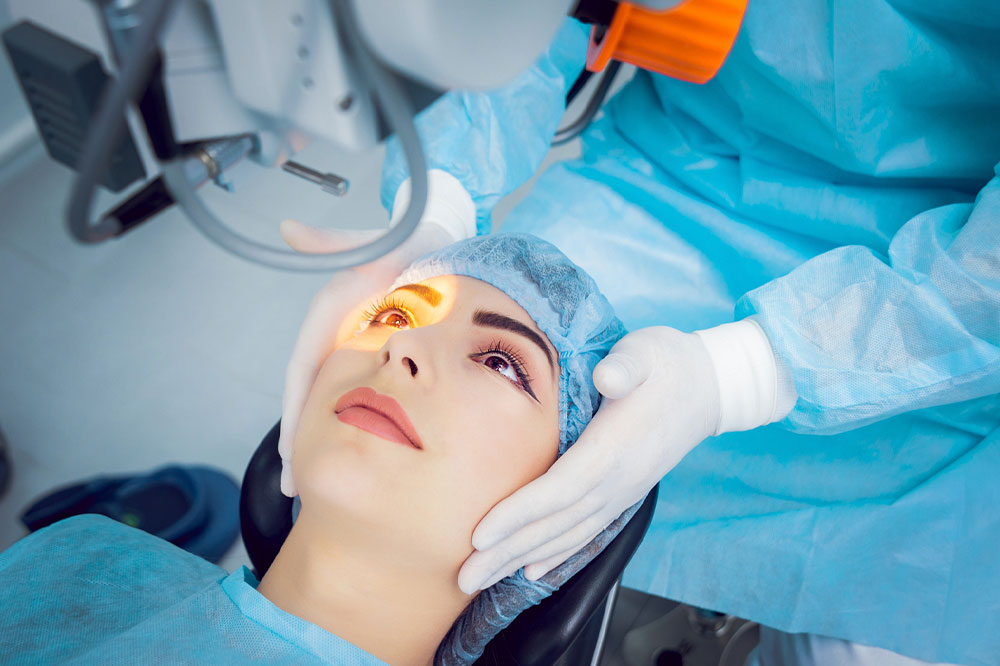
Different types of cataract surgery and their cost
The lens is an integral part of the human eye, which refracts the light rays entering it and helps a person see things better. When the lens gets clouded, it leads to a condition known as cataracts, characterized by blurry vision and difficulty identifying colors. When this condition worsens, a health expert surgically removes the lens and replaces it with an artificial one to restore normal vision. This process is known as cataract surgery.
Types of cataract surgery
Cataracts can develop with age or due to diseases like nearsightedness or diabetes. In rare cases, trauma, electric shock, or eye injury can cause early cataracts. Health experts will decide on the type of surgery based on the cause and severity of the condition. The three main types of cataract surgery are listed below.
Phacoemulsification
Phacoemulsification is the most common cataract surgery, where doctors use high-frequency ultrasound to break up the lens, and the surgeon gently removes it through suction. They then insert an artificial intraocular lens at the same spot, close the incision, and seal the opening using sutures. The surgery is quick and is carried out as an outpatient surgery within 10 to 15 minutes.
Femtosecond Laser-assisted Cataract Surgery (FLACS)
FLACS is a less-invasive procedure that uses laser instead of ultrasound to create an incision in the lens and to open, soften and remove the cataract membrane. FLACS is a very precise procedure and reduces the risk of post-surgery astigmatism. Health experts recommend it for advanced and mature cataracts.
Extracapsular Cataract Extraction (ECCE)
If the ophthalmologists cannot break down or dissolve the cataract using ultrasound, they use ECCE. They make a small incision, remove the natural lens, but retain the back of the capsule that keeps the lens in one place. They remove the damaged lens in one piece. They may also use suction to remove any of the smaller pieces. ECCE is used in rare cases for mature cataracts and cataracts caused by trauma.
Cost of cataract surgery
Four types of lenses – monofocal, toric, multifocal, and light adjustable – replace natural lenses. Healthcare professionals will help you choose your lens based on your needs, budget, and insurance coverage. Most Medicare and commercial insurance plans cover about 80% of cataract surgery if the patient meets certain requirements. Plans usually cover the cost of a monofocal lens, while you have to pay the cost of other lenses through out-of-pocket expenses. The cost of cataract surgery is also influenced your location, the experience of the surgeon, and whether they are part of your provider network. You may have to spend between $3,000 to $5,000 for Phacoemulsification and between $4,000 and $6,000 per eye for FLACS.
Do and don’ts after cataract surgery
Here are some easy-to-follow tips on aftercare for cataract surgery-
- Avoid washing the face or showering for a certain period, usually one week.
- Avoid soaps, lotions, makeup, or shampoos for the period specified by the healthcare team.
- Wear a protective shield or dark glasses for the suggested period.
- Administer the eye drops as instructed by the doctor without missing a dosage.
- Avoid exposure to bright light, sunlight, and steam from cooking.
- Avoid swimming and exposure to other irritants like smoke, dust, and allergens.
- Avoid rubbing your eye.
- Do not use electronic gadgets like tablets, mobile phones, and laptops until your surgeon clears them.
- Do not miss the scheduled follow-up visits.




